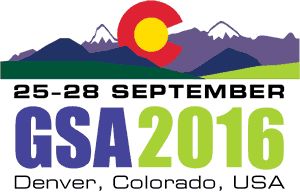Denn and Bierman, 2016
Old Rocks, New Data: Cosmogenic 10Be Analysis of a Relict Periglacial Boulder Field, Hickory Run State Park, Pennsylvania
Denn, A. and Bierman, P.R. (2016)
2016 Geological Society of America Fall Meeting, Denver, CO, 25-28 September
-
Shale Hills, GRAD STUDENT
-
Shale Hills, INVESTIGATOR
Abstract
Boulder fields are ubiquitous features in the Appalachian Mountains; yet, much remains unknown about the age and formation of these deposits. Likely created by mass movements under periglacial conditions, there are at least 96 known boulder fields south of the last glacial maximum boundary on the eastern seaboard (Park Nelson et al., 2007). There are two common schools of thought on the periglacial generation of regolith. The first is that intense weathering during glacial maxima renews the landscape each time, ‘wiping the slate clean’. The second is that periglacial features are the oldest, most stable features on the landscape. Cosmogenic isotopic measurements of boulder fields throughout the world have supported both of these ideas—some studies have shown exposure ages coeval with the LGM, while others have shown that boulder fields are multigenerational features with longer, more complex histories.
Here we present measurements of 10Be from Hickory Run boulder field, a 500 meter-long openwork of sandstone boulders immediately south of the LGM boundary near Kidder, PA. One of the most visited, enigmatic periglacial landforms, this block stream is notable for its size (~70,000m2, roughly 550x150m), flatness (<1°), and the heterogeneity of relative weathering intensity of boulders within it. We sampled boulders (n=53) in transects across the Hickory Run boulder field and into the adjacent forest to constrain the exposure age of the rock surfaces and to test whether or not there are spatial trends in isotopic concentration downfield, implying a sense of transport from outcrops upslope. Initial data at the southern end of the field suggest that Hickory Run is a significantly older than previously thought, with boulder ages ranging from 200 to 400ky indicating clearly that the field has been extant through the last several glaciations. Measurements of the remaining boulders are in progress.
Citation
Denn, A. and Bierman, P.R. (2016): Old Rocks, New Data: Cosmogenic 10Be Analysis of a Relict Periglacial Boulder Field, Hickory Run State Park, Pennsylvania . 2016 Geological Society of America Fall Meeting, Denver, CO, 25-28 September.
 This Paper/Book acknowledges NSF CZO grant support.
This Paper/Book acknowledges NSF CZO grant support.
Explore Further



